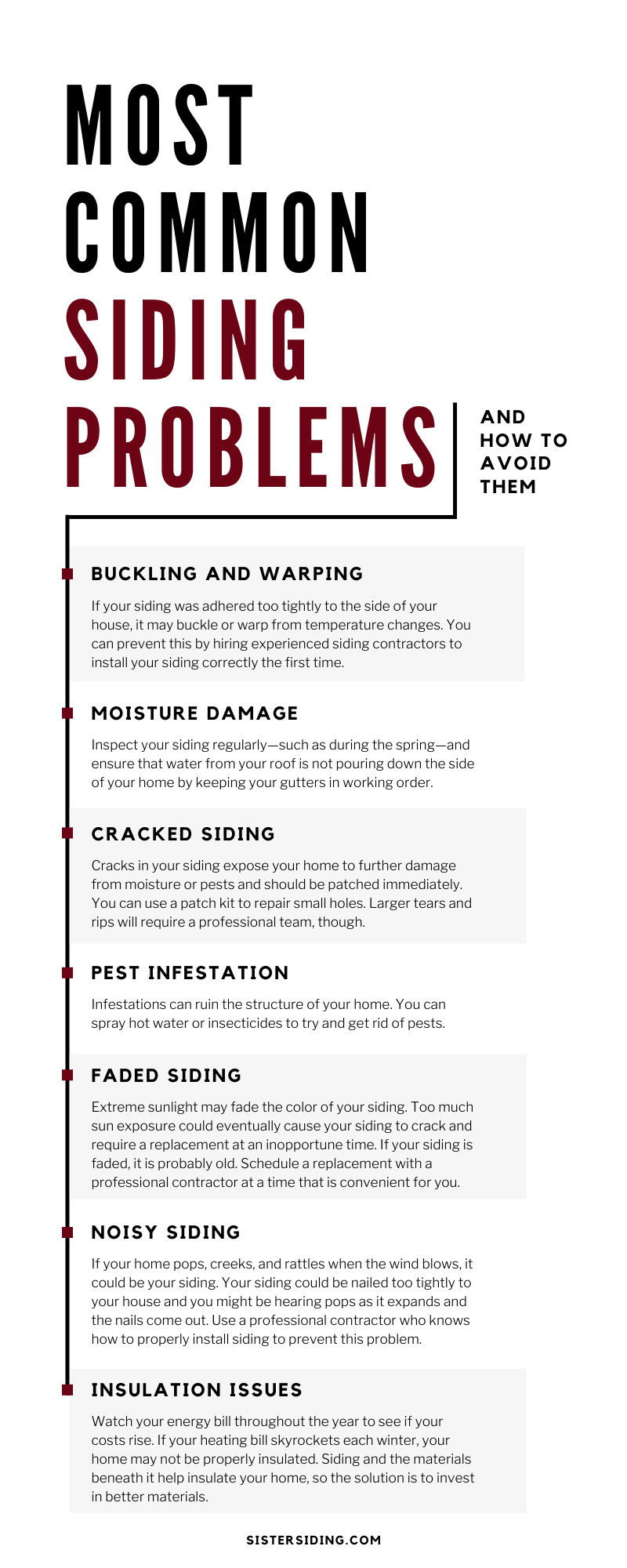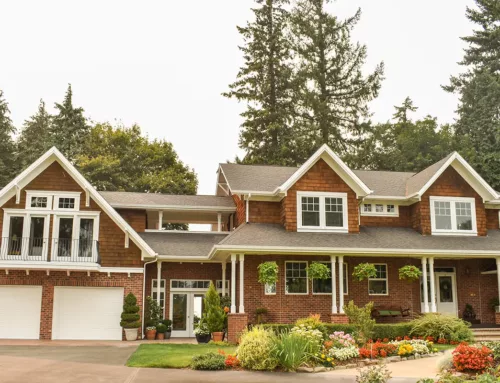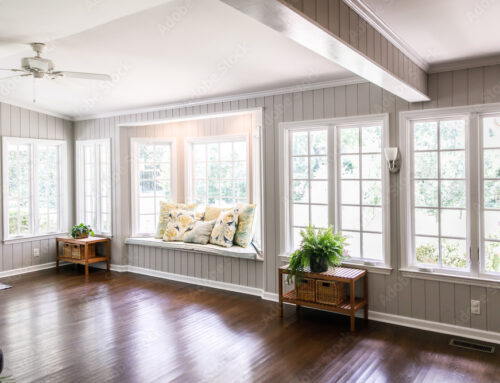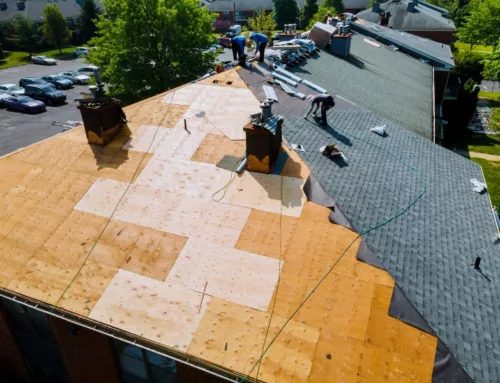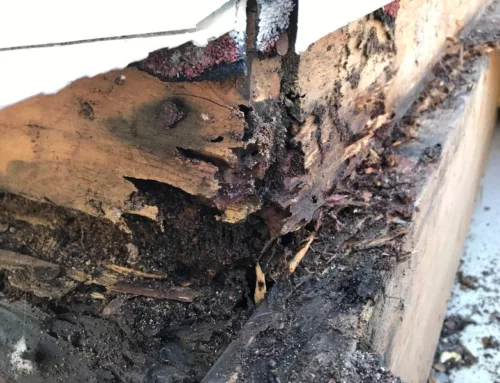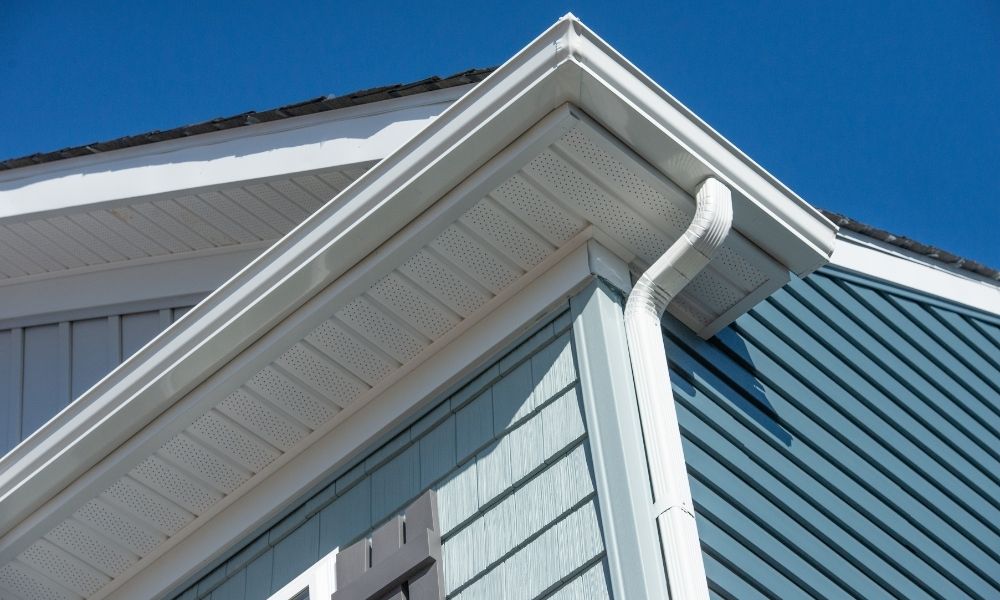
The siding on your house should not be taken for granted. Whether you bought your home the way it is or sided it yourself, it is important to know the most common siding problems and how to avoid them. If you are a homeowner and forget to inspect the exterior of your house, you leave it vulnerable to extensive damage. A storm or large gust of wind can rip a loose siding panel off your home and leave it bare. Good siding improves your home’s curb appeal and increases its overall value.
No one likes to think about boring home-improvement projects, but it is better to be prepared than to face an unexpected expense. Siding maintains the structural integrity of your house, though its lifespan depends on what your house goes through, such as the region it is in and how well you take care of it. Exposure to sun, rain, hail, falling tree limbs, bugs, animals, and children can all take their toll.
Buckling and Warping
If your siding was adhered too tightly to the side of your house, it may buckle or warp from temperature changes. Your siding materials can contract and expand. This problem is most common with vinyl siding because it must be hung with nails. You can prevent this by hiring experienced siding contractors to install your siding correctly the first time. Experienced siding professionals will install your siding so that it will withstand changing temperatures.
Moisture Damage
Siding is meant to protect your house from moisture. It is made with waterproof barriers which can be damaged and lead to dry rot. You should fix moisture damage right away so that it does not lead to further problems like black mold. A water damaged portion of your siding can be replaced. Inspect your siding regularly—such as during the spring—and ensure that water from your roof is not pouring down the side of your home by keeping your gutters in working order.
Pro Tip: Black mold is dangerous and can cause serious breathing issues and other health problems. Avoid having mold in your home by preventing moisture from building up.
Cracked Siding
All sorts of things can fly at your house and damage the siding. Cracks in your siding expose your home to further damage from moisture or pests and should be patched immediately. Vinyl siding is most vulnerable to damage because it is thin. Due to the way it is adhered to houses, vinyl siding is very easily damaged. You can use a patch kit to repair small holes. Larger tears and rips will require a professional team, though. Siding is easily cracked by things hitting it such as:
- Hail
- Rocks
- Tree limbs
- Sporting equipment
Pest Infestation
One of the toughest siding problems to detect is an infestation of pests. You might notice bugs or birds swarming around your home if you have this issue. Bugs tunnel through the wood and the birds peck at the siding to try and eat them. If you have an issue with pests, you will want to take care of it as soon as possible. Infestations can ruin the structure of your home. You can spray hot water or insecticides to try and get rid of pests. The most common pests that destroy siding include:
- Woodpeckers
- Carpenter bees
- Termites
- Power post beetles
Faded Siding
Extreme sunlight may fade the color of your siding. It is not enjoyable to look at faded siding when you get home, and it decreases the value of your property. Too much sun exposure could eventually cause your siding to crack and require a replacement at an inopportune time. Even fade-resistant siding can fade overtime with enough UV exposure. If your siding is faded, it is probably old. Schedule a replacement with a professional contractor at a time that is convenient for you.
Pro Tip: The best time of year to replace your house’s siding is fall!
Noisy Siding
If your home pops, creeks, and rattles when the wind blows, it could be your siding. Vinyl siding is especially noisy due to how it is installed and the sounds it makes when it expands and contracts when the temperature changes. Your siding could be nailed too tightly to your house and you might be hearing pops as it expands and the nails come out. Use a professional contractor who knows how to properly install siding to prevent this problem.
Insulation Issues
Problems with insulation can be difficult to detect. Even more challenging is determining the cause of the problem. Watch your energy bill throughout the year to see if your costs rise. If your heating bill skyrockets each winter, your home may not be properly insulated. Siding and the materials beneath it help insulate your home, so the solution is to invest in better materials. Poor insulation or damage could be allowing energy to escape.
Pro Tip: Winter is a popular time for siding installations. If you can wait until the following fall, you may get a better deal.
Keep in mind the most common siding problems and how to avoid them so that your home can look exquisite all year long. If you do run into any issues with damage, contact Sister Siding. Our professionals are experts at siding repair in Portland, OR, and will perform proper installs every time. Whether you need a full replacement or just a repair, Sister Siding can help. When it comes to vinyl, we can repair your siding, but most vinyl siding is being replaced with James Hardie siding made from fiber cement.
The best way to avoid problems with your siding is to use professional contractors, inspect your siding regularly, and maintain the exterior of your home. A problem with your roof could lead to a problem with your siding, so you should keep your entire home well-maintained. You will likely want to sell your property someday and will want to get the same amount out of it that you put into it. Repairing or installing siding is one of the best ways to improve your home’s value and curb appeal at the same time. Proper siding keeps your home operating smoothly and looking great.
